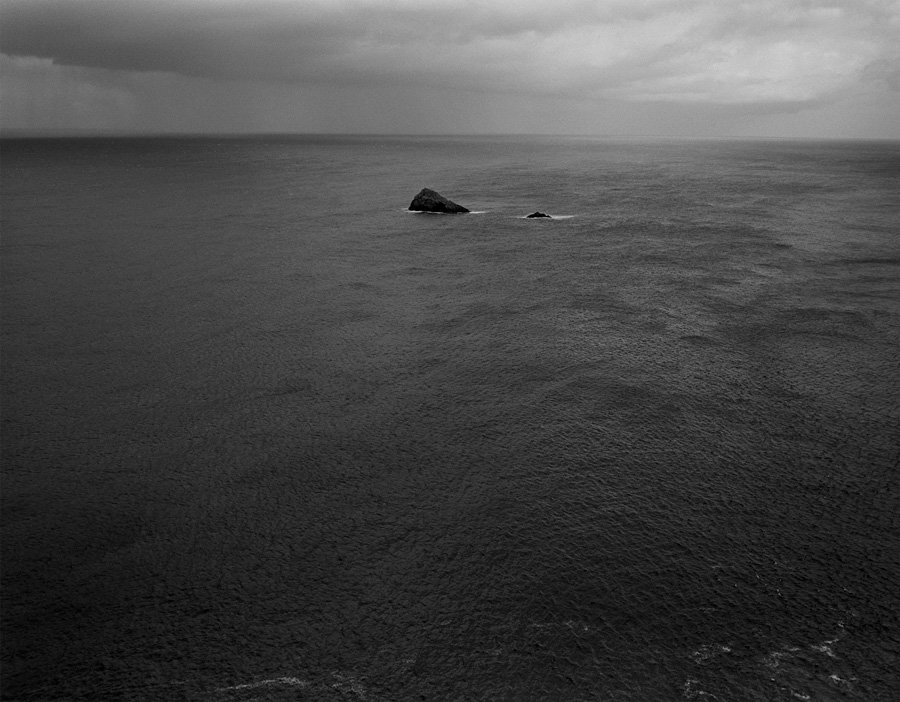Atlantic Mythologies
VISUAL ART
Atlantic Mythologies
Outdoor Photographic Exhibition
Sat 01 – Sat 22 July
Bertien van Manen: Beyond Maps and Atlases
Event Details
Times & Dates:
Sat 01 – Sat 22 July | 10am to 5pm
Official opening Sligo City Hall Sat 01 July, 5pm
Curator's Talk & Walk at 2pm Sat 01 July
Event Categories:
Visual Art
Admission:
Free
Venue:
Rosses Point Village Green
In Ireland, the Atlantic hugs over two thousand five hundred kilometres of coastline and looms as a powerful presence that pummels and caresses the rugged shoreline of the Western seaboard. The Atlantic has long held the gaze of our ancestors as they looked outward across the vast ocean into the unknown. The watery horizon shimmers with possibility beyond the edge of the land. It is a storied place, the Atlantic. Atlantic Mythologies features four photographers working with images dominated by this monumental ocean.Featuring work by Amelia Stein, Bertien van Manen, Jan O’Connell & Ronan McCall.
Curated by Yvette Monahan.
Thank you to Rosses Point Development Association.
The exhibition structures have been funded by County Sligo Leader Partnership
Curator's Talk & Walk at 2pm Sat 01 July
Bertien van Manen – Beyond Maps and Atlases
For Beyond Maps and Atlases, Dutch photographer Bertien van Manen turned to Ireland. Van Manen says, ‘At first, working in Ireland I wasn’t sure what I was looking for. My husband had died. I dispensed with the people and reflected on the atmosphere. I was guided by a feeling and a search, a longing for some kind of meaning in a place of myths and legends. There was mystery and endlessness at the edge of a land beyond which is nothing but a vast expanse.’
Where can it be found again, An elsewhere world, beyond Maps and atlases,
Where all is woven into
And of itself, like a nest
Of crosshatched grass blades? - Seamus Heaney
https://www.bertienvanmanen.nl/
Amelia Stein: Precipice
Amelia Stein - Precipice
The Point of Deliverance, The Ledge of the Cormorant, The Thieving Ledge, The Speckled Cliff, The Three Hags of the Promontory, The Big Spur, The Fool’s Hollow, The Cliff of the Eagles, are the English translations of the remembered given Irish Language names of specific headlands, rock formations, handed down in the Oral History of the Erris Peninsula, North Mayo, Ireland.
A visual interpretation of the work of local historians, Treasa Ní Ghearraigh and Uinsíonn Mac Graith who have researched and published , “The Placenames and Heritage of Dún Chaocháin “. Drawing on living memory and local history, they have recorded the given names assigned to rock formations, cliffs and areas of land before they pass out of the vocabulary of everyday life.
“The northern coast of Erris, on the other hand, is grandly precipitous, with cliffs up to 800 feet high, set with jagged promontories, deep gullies and outlying stacks, the whole forming the finest piece of cliff scenery in the country. It is almost unknown to the visitor, for it lies far from the highway which links Killala (Cill Alaidh, church of Aladh?) with Belmullet ; but little roads lead across the moorland to Portacloy (Port an chlaidhe, landing place of the rampart), Porturlin (Port urlainn) and Belderg (Béal dearg, red fort mouth), narrow inlets in the precipice; and from these one can traverse the whole length of this wild coast”. (Robert Llyod Praeger, The Way That I Went, Dublin, 1937, p. 196)
Ronan McCall: Inis Oirr
Ronan McCall – Inis Oirr
My practice has emerged from an adherence to ritual and a willingness to experiment. Emotive instinct is also crucial. My body guides me rather than critical thinking. Making use of the body more than the brain feels essential in the process of photography. By maintaining a neutrality of experience and clarity of vision – not clarity of process but of action and repair (if action is how the work can form in a truthful and instinctive way) – the hope is that the viewer will be similarly drawn in with an innate emotive response. Not having an agenda is helpful in my process and allows me to react on a physical level. The resulting edit becomes a much more non-linear body of work with a sense of something subliminal happening.
Jan O’Connell: Géilleadh - Surrender,
Jan O’Connell - Géilleadh - Surrender
Géilleadh - Surrender, was inspired by a rupture in a personal relationship and the need to re-establish a sense of belonging. This attachment has happened within the confines of a powerful landscape on the remote Dingle peninsula in West Kerry. Here pre-historic sites and prominent geographical points connect with specific mythologies and folklore.
This work explores our relationship, both internal and external, with the natural landscape. For me it is a relationship with the sea and the structures of a rugged West Kerry, which I project human feelings onto.
The Landscape cannot express empathy for us in a direct or conscious sense. Over time we have imbued the landscape with an emotional importance and a significance that provides resources for survival, inspiration, and a sense of belonging and identity. Through my photography I can infuse something human onto these rocks and ocean images, creating meaning with an immersive connection.
The visceral architecture of my rocks is often camouflaged in the immense “beauty” of their surroundings. Holding some ancient and intangible force, they exude eternal mystery while protecting us with their powerful energy.
These rocks are kept alive in this Gaeltacht, keepers of ancient secrets, loved locally by their given names. With my images I am forging a link to this ancient mythology, while being awarded a sense of place.
This landscape holds time and creates visions when one surrenders. It speaks to me, and we create imagery that reveals the magic that is Chorca Dhuibhne.


 View on Map
View on Map


